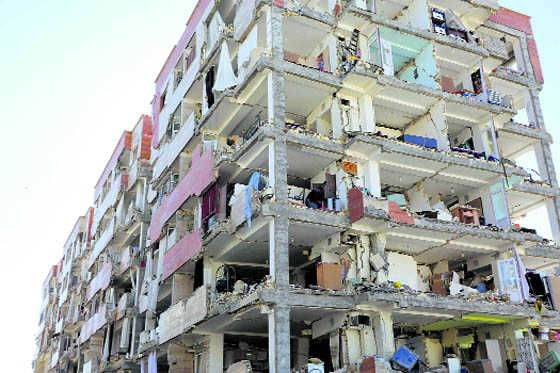
ANKARA/BAGHDAD, November 14
More than 450 people were killed in Iran when a magnitude 7.3 earthquake jolted the country on Sunday late night, the state media said on Monday, and rescuers were searching for dozens trapped under rubble in the mountainous area. At least six have died in Iraq as well.
State television said more than 450 people were killed in Iran’s deadliest earthquake in more than a decade and at least 6,600 were injured. Officials said the death toll would rise as search and rescue teams reached remote areas of Iran.
The earthquake was felt in several western provinces of Iran but the hardest hit province was Kermanshah. More than 300 of the victims were in Sarpol-e Zahab county in Kermanshah province, about 15 km (10 miles) from the Iraq border.
Iranian state television said the quake had caused heavy damage in some villages where houses were made of earthen bricks. More than 500 villages in the region suffered massive damage, Mansoureh Bagheri, a spokeswoman for the Iranian Red Crescent in Tehran, said. Rescuers were labouring to find survivors trapped under collapsed buildings.
The quake also triggered landslides that hindered rescue efforts. At least 14 provinces in Iran had been affected. The US Geological Survey said the quake measured magnitude 7.3. An Iraqi meteorology official put its magnitude at 6.5, with the epicentre in Penjwin in Sulaimaniyah province in the Kurdistan region.
Tempers frayed in the quake-hit area as the search went on for survivors amidst the twisted rubble of collapsed buildings. Kurdish officials said at least six people were killed in Iraq and at least 68 injured, adding that in northern Iraq Kurdish districts seven were killed and 325 wounded. The quake was felt as far south as Baghdad, where many residents rushed from their houses and tall buildings when tremors shook the Iraqi capital.
“I was sitting with my kids having dinner and suddenly the building was just dancing in the air,” said Majida Ameer. who ran out of her building with her three children.
“I thought at first that it was a huge bomb. But then I heard everyone around me screaming: ‘Earthquake!’” Similar scenes unfolded in Erbil, the capital of the Kurdistan Region, and across other cities in northern Iraq, close to the quake’s epicentre.
Iran sits astride major fault lines and is prone to frequent tremors. A magnitude 6.6 quake on December 26, 2003, devastated the historic city of Bam, 1,000 km from Tehran, killing about 31,000 people.
Electricity and water was cut off in several Iranian and Iraqi cities, and fears of aftershocks sent thousands of people in both countries out onto the streets and parks in cold weather.
Across the area, rescue workers and special teams using sniffer dogs and heat sensors searched wreckage. Blocked roads made it hard for rescue workers to reach some remote villages.
Iranian authorities acknowledged the relief effort was slow and patchy. Over 70,000 people needed emergency shelter, the Iranian Red Crescent said. Hojjat Gharibian, one of hundreds of homeless Iranian survivors, was huddled against the cold with his family in Qasr-e Shirin.
A local official said aftershocks slowed down erecting tents for homeless people but electricity had been restored in most of the quake-hit areas. Tasnim news agency said Iran’s gas exports to Iraq was not interrupted because of the quake.